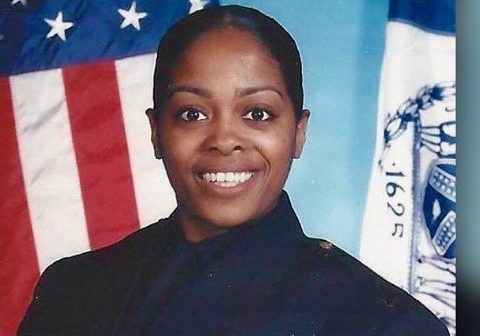On May 18, 2017, Tulsa, Oklahoma Police Officer Betty Shelby was found not guilty of first-degree manslaughter in the shooting death of Terence Crutcher.
On June 16, 2017 St. Anthony, Minn. Police Officer Jeronimo Yanez was found not guilty of murder in the shooting death of Philando Castile last year.
On June 21, 2017, former Milwaukee Police Officer Dominique Heaggan-Brown was found not guilty of first-degree reckless homicide in the shooting death of Sylville Smith.
On June 23, 2017, a second mistrial was declared in the case of former University of Cincinnati Police Officer Ray Tensing in the shooting death of Samuel DuBose. The prosecutor has not decided whether to seek a third trial.
Each police shooting had its own unique set of circumstances. If you’re not already familiar with the incidents, I suggest you follow the links to catch up. In two of the cases, the shooting victims were armed. In another, the suspect drove off with the officer’s arm in the car. In the last, the suspect was under the influence of PCP.
Each of these cases was thoroughly vetted. Prosecutors presented their best evidence. The jurors heard weeks of testimony. The judges oversaw the cases with keen attention to detail, especially given the public concerns.
According to critics, the not-guilty verdicts and mistrials are evidence of an unresolved justice and a broken jury system.
The reactions after the verdicts have been strong, with demonstrations and expressions of frustration.
People died at the hands of the police. For some, there is a profound sense of injustice. To some police critics, there is a sense police officers have been given a “license to kill” with impunity.
A key point in these court cases is based upon the 1989 US Supreme Court case of Graham vs. Connor. In that case, the Supreme Court ruled the justification of lethal force by a police officer “must be judged from the perspective of a reasonable officer, rather than with the 20/20 vision of hindsight.”
It has been the law of the land since then.
The jurors in each of these cases were instructed to consider what a “reasonable officer” would do in each circumstance. It’s not what is known after the fact that matters. It’s what the officer processes in the fractions of a second when life or death decisions are made.
The ruling didn’t apply to a “reasonable person standard.” It was very specific to a “reasonable officer.”
Is it reasonable for an officer to believe someone could in an instant try and kill them? There is plenty of video evidence. There are far too many videos to list, but below are a few:
Is it reasonable for a police officer to believe an unarmed person might just be able to kill them?
Is it reasonable to believe a suspect fleeing on foot might have a gun?
What a reasonable police officer knows through experience is that we live in a violent society.
As police officers, they are duty bound to deal with the worst of society. Every day they are watching the same videos you do. But for them, it’s not infotainment. The videos provide lessons on how to stay alive. Their lives will depend on the split-second decisions they may be called to make.
Police officers try to make the right call in the time it takes to snap your fingers. Most of the time it’s the right decision. But sometimes even I wonder at the decision making.
What is unreasonable is for people to expect ordinary men and women to be perfect in their decision making when confronted with the realities of the world we live in. The U.S. has the highest violent crime rate of the western world. It leads in gun crime, homicides, aggravated assaults and not surprisingly in police officers killed.
If you don’t believe me, just do a Google search on shootings, murder, robberies or any number of violent crimes. They are an everyday occurrence across the country.
Former Dallas Police Chief David Brown, in addressing the high expectations for police officers, said: “Not enough mental health funding, let the cop handle it. Not enough drug addiction funding, let’s give it to the cops. Here in Dallas we have a loose dog problem. Let’s have the cops chase loose dogs. Schools fail, give it to the cops. Seventy-percent of the African-American community is being raised by single women, let’s give it to the cops to solve as well. That’s too much to ask. Policing was never meant to solve all those problems. I just ask other parts of our democracy along with the free press to help us.”
If you want to see the rate of officer-involved shootings, maybe we have to become better people. There were an estimated 15,696 murders last year, 90,185 rapes and 320,374 robberies, according to the FBI. These numbers speak loudly of the violence that permeates our culture.
For those critics crying for justice, doing the hard work at addressing our social ills is too daunting a task. It is much easier to say police are murdering people for no reason.
That seems more reasonable, doesn’t it?
Joe is a retired Anaheim Police Department captain. You can reach him at jvargas@behindthebadgeoc.com.
 Behind the Badge
Behind the Badge



